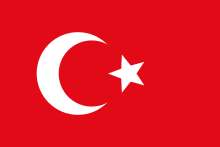Carl Petersén (born 1883)
Carl Jacob Karsten Petersén (18 April 1883 – 14 April 1963) was a Swedish Army officer. During World War II he served as head of the intelligence agency C-byrån. He later served as Secretary General of the International Road Transport Union.
Carl Petersén | |
|---|---|
 | |
| Nickname(s) | Petter[1] Calle P[2] |
| Born | 18 April 1883 Stockholm, Sweden |
| Died | 14 April 1963 (aged 79) Geneva, Switzerland |
| Buried | |
| Allegiance | Sweden |
| Service/ | Swedish Army |
| Years of service | 1903–1946 |
| Rank | Lieutenant Colonel[3] |
| Unit | Persian Gendarmerie (1911–13) White Guard (1918) |
| Commands held | C-byrån (1940–46) |
| Battles/wars | Gallipoli Campaign Finnish Civil War Operation Stella Polaris |
Career
Petersén was born on 18 April 1883 in Stockholm, Sweden, the son of deputy assistant Carl Petersén and Ingeborg Tanberg. He became a second lieutenant in the Uppland Artillery Regiment (A 5) in 1903 and attended the Royal Central Gymnastics Institute in 1907. Petersén was major and instructor in the Persian Gendarmerie from 1911 to 1913 and participated in the Gallipoli Campaign in 1915.[4] The same year he was promoted to captain in the Swedish Army and did the certificate exams for balloon license.[4] Petersén participated in the Finnish Civil War in 1918 as a lieutenant colonel in the White Guard.
He was then attaché in Warsaw from 1919 to 1920, was in the Commission Concerning the Exchange of Greek and Turkish Populations from 1923 to 1925, the Bulgarian Refugee Commission from 1926 to 1928, in Syria in 1929 and the League of Nations border control commission in Syria and Iran in 1932.[4] In 1932, Petersén was promoted to major in the Swedish Army. He was Head of Department at the International Red Cross in Paris from 1921 to 1937, the general secretary of the Royal Swedish Aero Club from 1937 to 1939 and was legation counsellor in Berlin and worked at the B Department of the Ministry for Foreign Affairs from 1939 to 1940.[4] Petersén was head of the intelligence agency C-byrån from 1940 to 1946. In 1944, he led the Swedish side of the Operation Stella Polaris.[5]
During the war, Petersén and his colleague Algot Törneman had organised private arms trades. They had sold weapons via a private firm, Skandiastål, to the Norwegian and Danish resistance movements. After the war Petersén moved to Switzerland where he continued to represent the weapons firm Skandiastål.[6] He later served as Secretary General of the International Road Transport Union in Geneva.[7]
Personal life
In 1910, Petersén married Esther Warodell.[4] He was the father of ambassador Carl Henrik Gustaf Petersén (1914–1976).[7]
Petersén died on 14 April 1963 in Geneva, Switzerland.[7] He was interred on 27 June 1963 at Norra begravningsplatsen i Stockholm.[8]
Awards and decorations
Swedish





Foreign
Orders








_Ribbon.svg.png)




.svg.png)










Medals and crosses




.svg.png)









References
- Svensson, Rune (1999). Huldt, Bo; Böhme, Klaus-R (eds.). Militäthistorisk Tidskrift 1999 (PDF). Militärhistorisk tidskrift, 0283-8400 0283-8400 ; 1999 (in Swedish). Stockholm: Försvarshögskolan (FHS). p. 83. ISSN 0283-8400. SELIBR 5gmf4ffd3xbjs03n.
- Svensson, Rune (1999). Huldt, Bo; Böhme, Klaus-R (eds.). Militäthistorisk Tidskrift 1999 (PDF). Militärhistorisk tidskrift, 0283-8400 0283-8400 ; 1999 (in Swedish). Stockholm: Försvarshögskolan (FHS). p. 113. ISSN 0283-8400. SELIBR 5gmf4ffd3xbjs03n.
- Sveriges statskalender för året 1955 (in Swedish). Stockholm: Fritzes offentliga publikationer. 1955. p. 38.
- Harnesk, Paul, ed. (1945). Vem är vem?. D. 1, Stockholmsdelen [Who is Who?. D. 1, Stockholm part] (in Swedish). Stockholm: Vem är vem bokförlag. p. 650.
- Helgegren, Carl-Magnus (10 November 2013). "Operation Stella Polaris" (MP3). P3 Dokumentär (in Swedish). Sveriges Radio. Retrieved 17 March 2016.
- Bratt, Peter (21 June 1998). "Svensk kupp gav nazisternas ryska koder till USA" [Swedish coup gave the Nazi's Russian codes to the US]. Dagens Nyheter (in Swedish). Archived from the original on 1 December 2017. Retrieved 17 March 2016.
- "DÖDSFALL". Svenska Dagbladet (in Swedish). 18 April 1963. p. A15. Retrieved 14 May 2020.
- "Norra begravningsplatsen, kvarter 04A, gravnummer 1" (in Swedish). Hittagraven.se. Retrieved 17 March 2014.